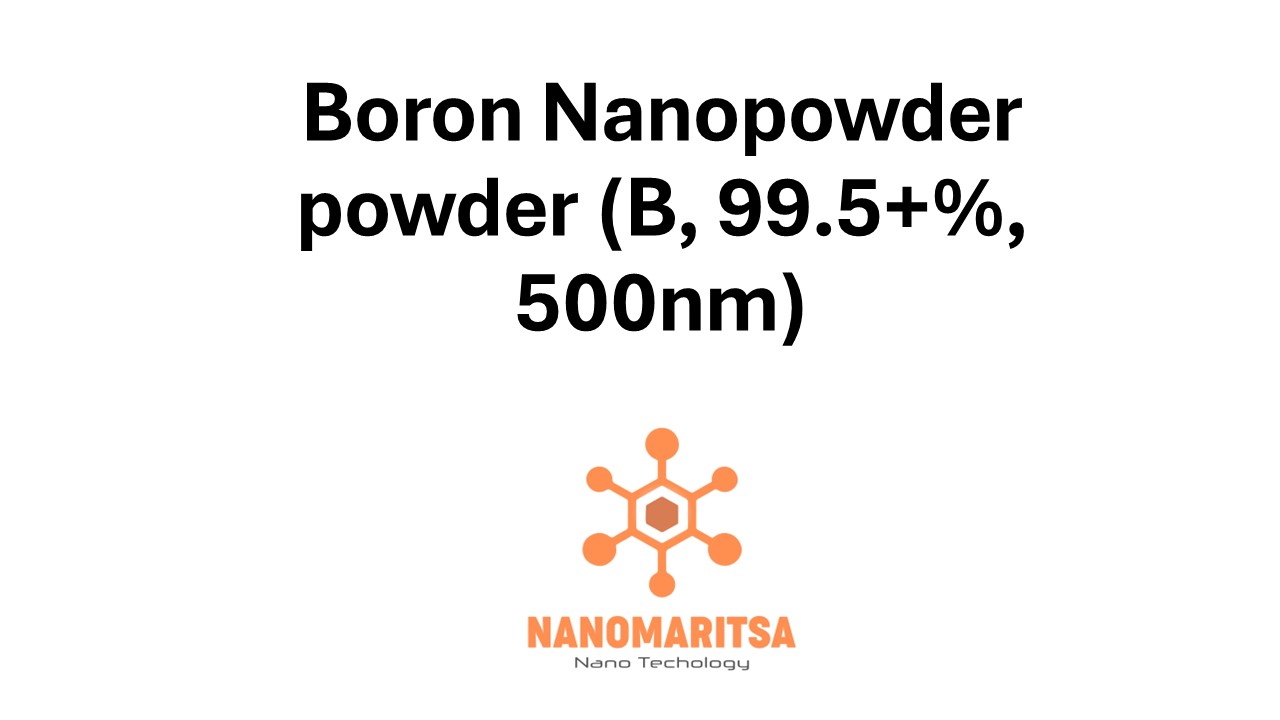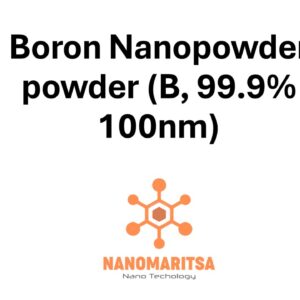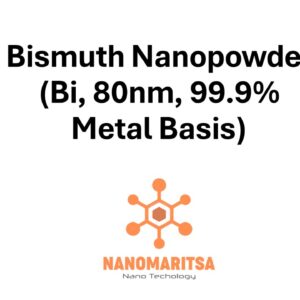Boron Nanopowder (B, 99.5+%, 500nm) is a high-purity material with a particle size of approximately 500 nanometers (nm), offering unique advantages in a range of advanced industrial and scientific applications. With a purity of 99.5+%, this nanopowder provides an excellent balance between purity, size, and performance, making it a versatile choice for various sectors. Below is a detailed overview of its key features, properties, and applications:
Key Features:
Boron (B):
Boron is a lightweight metalloid known for its high thermal stability, hardness, and neutron absorption properties. It plays a critical role in applications requiring high-performance materials, such as nuclear reactors, aerospace components, and energy storage systems. Boron’s unique combination of properties enhances the mechanical and chemical characteristics of materials in which it is used.
Purity (99.5+%):
With a purity level of 99.5+%, this boron nanopowder has minimal impurities, ensuring consistent and reliable performance across a wide range of applications. While slightly lower in purity than other high-purity boron powders, it still delivers exceptional quality and can be used in many applications where ultra-high purity is not required.
Particle Size (500nm):
The 500nm particle size places this nanopowder in the lower end of the nanoscale range. This size strikes a balance between the enhanced properties of nanoscale materials (such as increased surface area and reactivity) and the ease of handling typical of slightly larger particles. The 500nm size allows for better dispersion and integration in composite materials and enhances the performance of the powder in various chemical and physical applications.
Properties:
Thermal Stability:
Boron is known for its excellent thermal stability, with a high melting point (~2,300°C). This makes the nanopowder suitable for high-temperature applications in environments where materials need to maintain their structural integrity and performance under extreme conditions.
High Hardness:
Boron’s inherent hardness makes this nanopowder a valuable material in applications that require durability and resistance to wear, such as abrasives, cutting tools, and wear-resistant coatings. Its hardness is particularly beneficial in applications where precision and longevity are essential.
Neutron Absorption:
Boron nanopowder’s high neutron cross-section makes it particularly effective in nuclear applications, such as in reactor control rods and radiation shielding. Its ability to absorb neutrons helps regulate nuclear fission and protects against harmful radiation, making it an indispensable material in nuclear energy and research.
Increased Surface Area:
With a nanoparticle size of 500nm, this powder has a significant surface area relative to its volume, which enhances its chemical reactivity and dispersibility. This property allows for better integration with other materials and makes it suitable for catalytic processes, energy storage, and other applications where surface interaction is critical.
Chemical Reactivity:
Boron nanopowder is chemically reactive, enabling it to form various boron-based compounds that are used in industries ranging from metallurgy to electronics. Its reactivity makes it an essential material for synthesizing advanced chemical compounds and as an additive in metal alloy production.
Applications:
- Nanotechnology and Electronics:
The 500nm particle size allows boron nanopowder to be integrated into nanotechnology applications, where it enhances the performance of materials used in semiconductors, sensors, and other electronic components. The increased surface area of the powder improves the functionality of these devices, making it a valuable material in microelectronics and advanced manufacturing processes. - Energy Storage:
Boron nanopowder is used in energy storage technologies, such as lithium-ion batteries and supercapacitors. Its high surface area and reactivity improve the efficiency of these systems by enhancing charge/discharge cycles and increasing energy density. As energy storage demands continue to grow, boron-based materials are becoming increasingly important in advancing battery technologies. - Nuclear Applications:
The neutron absorption properties of boron make it highly effective in nuclear reactors, where it helps control nuclear reactions and protect against radiation. Boron nanopowder is used in control rods, radiation shielding, and other critical components of nuclear reactors and radiation monitoring systems. - Metallurgy and Alloying:
Boron nanopowder is widely used in metallurgy, where it is added to metal alloys to improve properties such as hardness, wear resistance, and oxidation resistance. It is particularly valuable in the production of steel and aluminum alloys, where its addition enhances the material’s strength and longevity, making it suitable for demanding industrial applications. - Catalysis and Chemical Synthesis:
The reactivity and large surface area of boron nanopowder make it an excellent catalyst in chemical reactions, such as those used in petroleum refining and the production of specialized chemicals. It is also used in the synthesis of boron-based compounds for applications in pharmaceuticals, electronics, and other high-tech sectors. - Aerospace and Defense:
Boron nanopowder’s combination of lightweight properties and high-strength makes it an ideal material for use in aerospace and defense applications. It is incorporated into composite materials used in aircraft, spacecraft, and defense systems, where its ability to withstand high temperatures and provide structural strength is essential. - Pyrotechnics:
Due to its high energy release properties, boron nanopowder is used in pyrotechnic compositions, including ignition devices and solid rocket propellants. Its ability to produce intense energy makes it a valuable component in various pyrotechnic applications, including fireworks and military ordnance.
Handling and Safety:
Health and Safety Considerations:
As with other fine powders, boron nanopowder should be handled with care to avoid inhalation, ingestion, or skin contact. Use appropriate personal protective equipment (PPE), such as gloves, masks, and safety goggles, to minimize exposure. The fine particle size can increase the risk of respiratory issues, so it is essential to use proper ventilation systems when working with the powder.
Storage:
Store boron nanopowder in a cool, dry, and well-ventilated area to prevent moisture absorption and contamination. Ensure that containers are tightly sealed to maintain the powder’s purity and prevent any degradation of its properties.
Precautions:
When handling boron nanopowder, it is crucial to avoid generating dust, as inhalation of fine particles can pose health risks. Always work in a controlled environment, such as a fume hood, to minimize exposure to airborne particles. Follow proper disposal procedures to comply with environmental regulations.
Summary:
Boron Nanopowder (B, 99.5+%, 500nm) is a high-performance material that offers a range of valuable properties, including high thermal stability, hardness, neutron absorption, and chemical reactivity. Its 500nm particle size provides a balance between the enhanced reactivity of nanoscale materials and ease of handling. This nanopowder is widely used in advanced applications across industries such as electronics, energy storage, nuclear technology, metallurgy, and aerospace. Its versatility and effectiveness make it an essential material for cutting-edge technologies and innovation in a variety of scientific and industrial fields.
| Measurement (gr) | 100 grams, 500 grams, 1000 grams |
|---|






